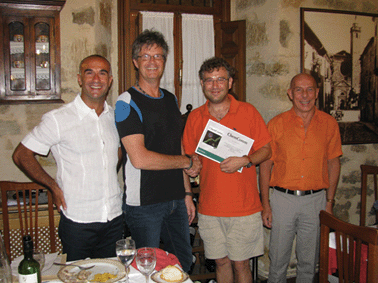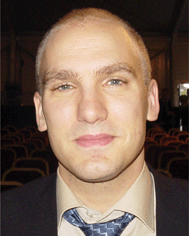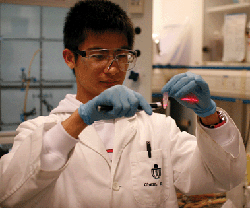This month sees the following articles in ChemComm that are in the top ten most accessed:-
A pyrene-based fluorescent sensor for Zn2+ ions: a molecular ‘butterfly’
Erendra Manandhar, J. Hugh Broome, Jalin Myrick, Whitney Lagrone, Peter J. Cragg and Karl J. Wallace
Chem. Commun. , 2011, 47, 8796-8798, DOI: 10.1039/C1CC13286E
Highly selective ion probe for Al3+ based on Au(i)-Au(i) interactions in a bis-alkynyl calix[4]arene Au(i) isocyanide scaffold
Franky Ka-Wah Hau, Xiaoming He, Wai Han Lam and Vivian Wing-Wah Yam
Chem. Commun. , 2011, 47, 8778-8780, DOI: 10.1039/C1CC12677F
Nanostructured MnO2: an efficient and robust water oxidation catalyst
Venkata Bharat Ram Boppana and Feng Jiao
Chem. Commun., 2011, 47, 8973-8975, DOI: 10.1039/C1CC12258D
Direct amidation of azoles with formamides via metal-free C–H activation in the presence of tert-butyl perbenzoate
Tao He, Hongji Li, Pinhua Li and Lei Wang
Chem. Commun., 2011, 47, 8946-8948, DOI: 10.1039/C1CC13086B
A facile one-pot synthesis of uniform core–shell silver nanoparticle@mesoporous silica nanospheres
Lu Han, Hao Wei, Bo Tu and Dongyuan Zhao
Chem. Commun., 2011, 47, 8536-8538, DOI: 10.1039/C1CC12718G
Photolabile protecting groups in metal–organic frameworks: preventing interpenetration and masking functional groups
Rajesh K. Deshpande, Geoffrey I. N. Waterhouse, Geoffrey B. Jameson and Shane G. Telfer
Chem. Commun., 2012, Advance Article, DOI: 10.1039/C1CC12884A
A novel low density metal–organic framework with pcu topology by dendritic ligand
Jiangtao Jia, Fuxing Sun, Qianrong Fang, Xiaoqiang Liang, Kun Cai, Zheng Bian, Huijun Zhao, Lianxun Gao and Guangshan Zhu
Chem. Commun., 2011, 47, 9167-9169, DOI: 10.1039/C1CC12891D
Triazole: a unique building block for the construction of functional materials
Michal Juríček, Paul H. J. Kouwer and Alan E. Rowan
Chem. Commun., 2011, 47, 8740-8749, DOI: 10.1039/C1CC10685F
A new rhodamine based colorimetric ‘off–on’ fluorescence sensor selective for Pd2+ along with the first bound X-ray crystal structure
Shyamaprosad Goswami, Debabrata Sen, Nirmal Kumar Das, Hoong-Kun Fun and Ching Kheng Quah
Chem. Commun., 2011, 47, 9101-9103, DOI: 10.1039/C1CC12845K
Rational design of a nanometre-sized covalent octahedron
Junling Sun and Ralf Warmuth
Chem. Commun., 2011, 47, 9351-9353, DOI: 10.1039/C1CC13381K
Why not take a look at the articles today and blog your thoughts and comments below.
Fancy submitting an article to ChemComm? Then why not submit to us today or alternatively contact us with your suggestions.















 2011
2011 

 A new way of obtaining shikimic acid, the compound needed to make Tamiflu, has been discovered. Shikimic acid is normally obtained from star anise, a Chinese cooking spice. The shortage of star anise caused Roche problems a few years ago, when the demand for Tamiflu peaked during the H1N1 pandemic in 2009, so new sources are constantly being sought.
A new way of obtaining shikimic acid, the compound needed to make Tamiflu, has been discovered. Shikimic acid is normally obtained from star anise, a Chinese cooking spice. The shortage of star anise caused Roche problems a few years ago, when the demand for Tamiflu peaked during the H1N1 pandemic in 2009, so new sources are constantly being sought.